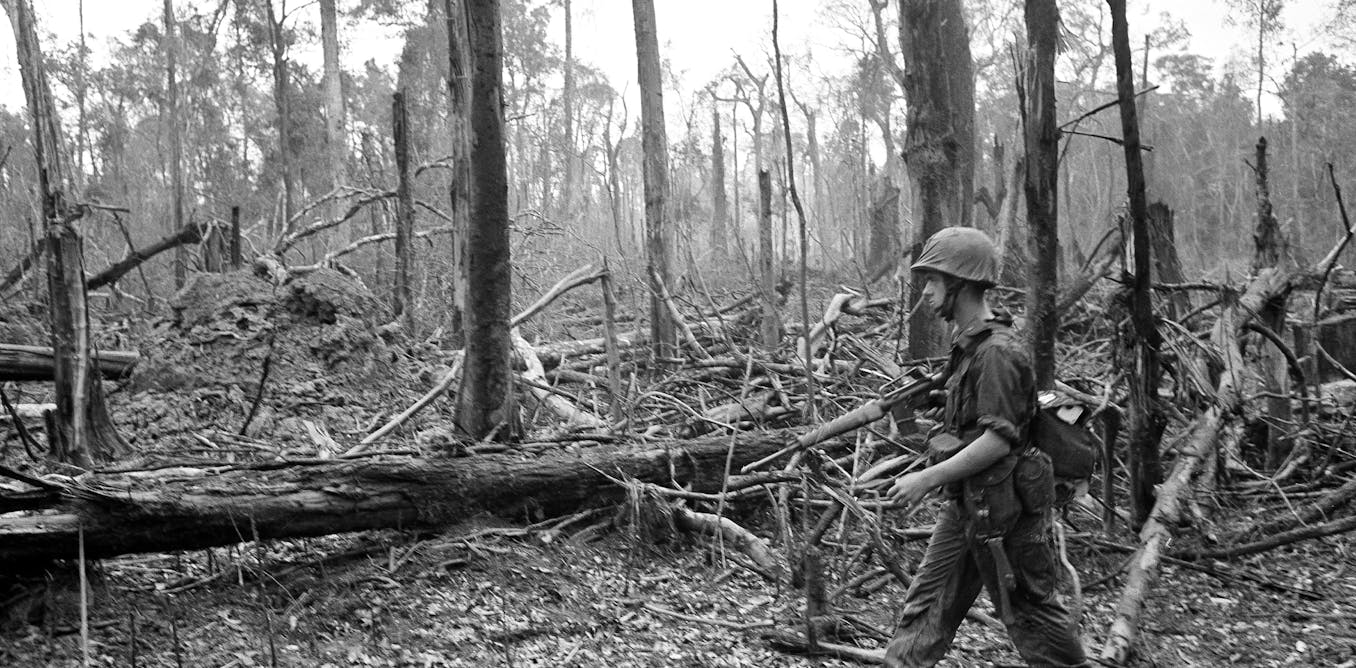Now Reading: 50 years later, Vietnam’s environment still bears the scars of war – and signals a dark future for Gaza and Ukraine
-
01
50 years later, Vietnam’s environment still bears the scars of war – and signals a dark future for Gaza and Ukraine
50 years later, Vietnam’s environment still bears the scars of war – and signals a dark future for Gaza and Ukraine

After the Vietnam War ended on April 30, 1975, the environmental devastation it left behind was evident. The use of herbicides and incendiary weapons during the conflict had caused significant damage to Vietnam’s ecosystems. Despite efforts to restore the damaged landscapes, progress has been slow, and the long-term ecological consequences of the war are still visible today.
The term “ecocide” was coined in the late 1960s to describe the environmental destruction caused by the U.S. military’s tactics in Vietnam. These included the use of herbicides like Agent Orange and incendiary weapons like napalm to combat guerrilla forces. The effects of these tactics were devastating, leading to widespread environmental damage that still persists.
Efforts to address the environmental impact of the war have been limited, and the slow pace of recovery is concerning. While international treaties have been established to protect the environment during wartime, they have not been effective in compelling post-war restoration efforts in Vietnam. Similar challenges are seen in current conflicts in other parts of the world.
The use of herbicides and incendiary weapons during the Vietnam War had severe consequences for the country’s ecosystems. Operation Ranch Hand, which sprayed millions of gallons of herbicides over vast areas of Vietnam, caused extensive damage to forests, rivers, and villages. The use of Agent Orange, a dioxin-contaminated defoliant, led to long-lasting environmental contamination.
In addition to herbicides, incendiary weapons such as napalm bombs and “daisy cutters” were used to clear forests and destroy vegetation. The environmental impacts of these tactics were significant, with forests being ravaged and ecosystems disrupted. The use of weather modification techniques further exacerbated the environmental damage in Vietnam.
Despite the widespread environmental destruction caused by the war, efforts to restore the damaged ecosystems have been slow. Limited resources and ongoing challenges have hindered restoration projects, and the ecological consequences of the conflict continue to affect Vietnam’s environment.
In recent years, efforts to clean up dioxin-contaminated sites in Vietnam have been made, but challenges remain. The cleanup of areas like the Da Nang airport has required significant resources and international cooperation. The long-term effects of Agent Orange and other contaminants on the environment and public health are still being addressed.
The Vietnam War serves as a cautionary tale about the ecological consequences of armed conflict. It highlights the importance of addressing environmental damage during and after warfare and the need for stronger international mechanisms to ensure environmental protection in conflict zones.






